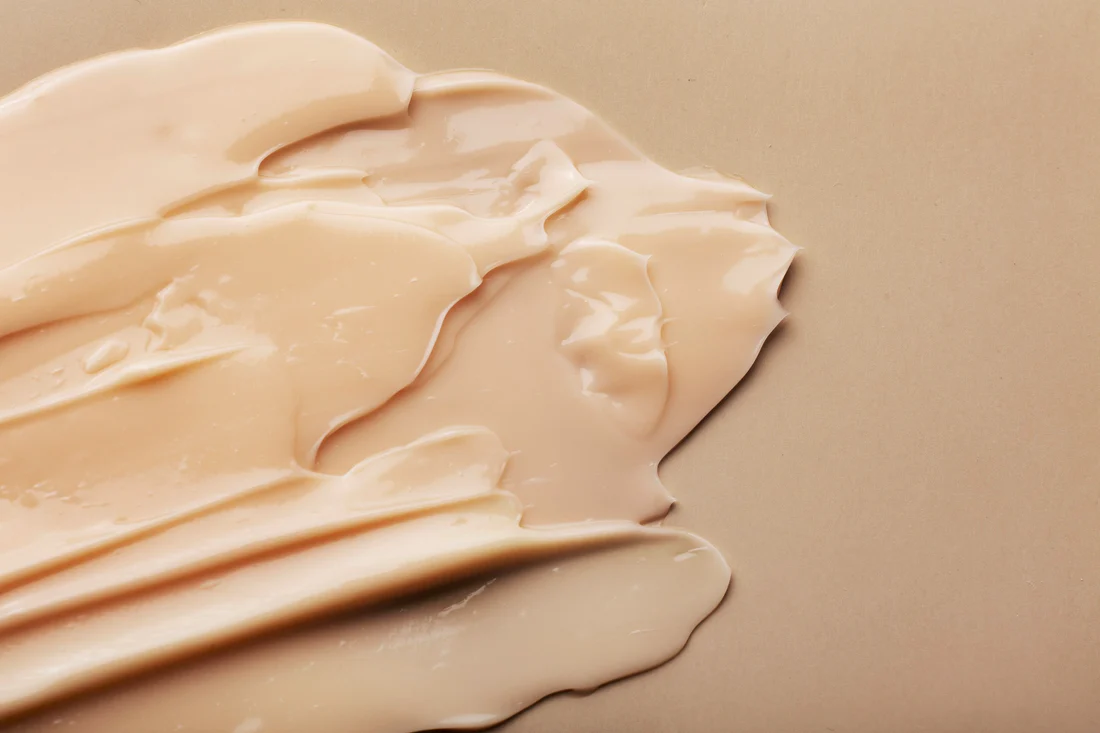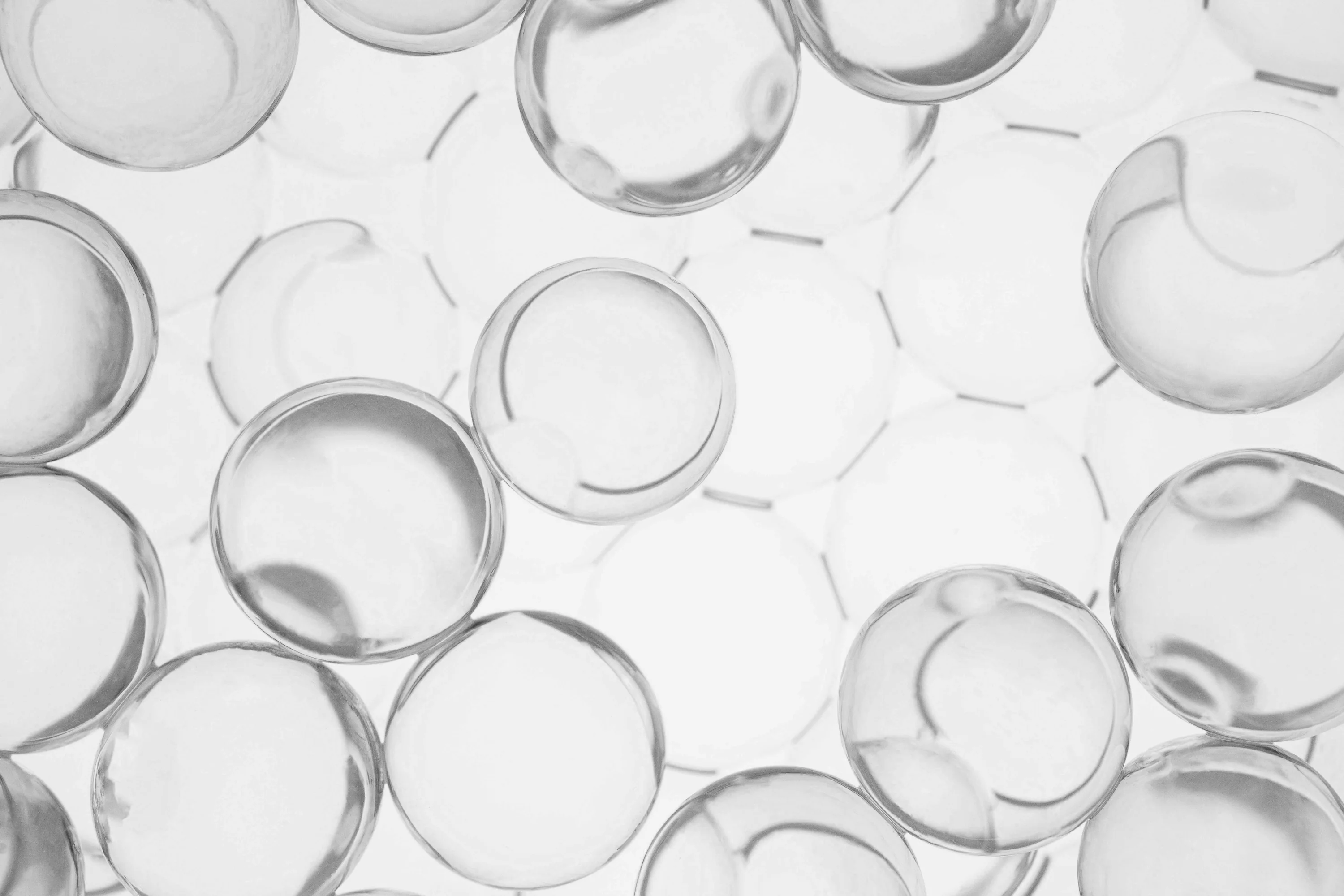Blog
December. 19 2025


Imagine a protective wall on the surface of your skin, composed of countless tiny "bricks" and "cement." The most important component in this "cement" is Ceramide NP. It is a lipid molecule, with the professional name N-stearoyl phytosphingosine(N-Oleoy-phytosphingosine), and is usually labeled as Ceramide NP or Ceramide 3 in cosmetic ingredient lists.
The naming of Ceramide NP hides the code to its chemical structure: "N" represents the normal fatty acid chain, while "P" indicates its phytosphingosine base. This special structure allows Ceramide NP to integrate perfectly into the skin's natural protective layer, fitting into the
skin's own lipid structure like a puzzle piece.
In healthy skin, Ceramide NP is not a rare component—it accounts for 22.1% of all ceramides in the stratum corneum, making it the most abundant ceramide subtype. It can be said that it is the "main force" of our skin barrier, responsible for maintaining the barrier's integrity and functionality.
To understand the importance of Ceramide NP, we first need to understand the structure of the skin barrier. Our stratum corneum adopts the classic "brick-and-mortar" structure, where corneocytes are the "bricks," and intercellular lipids (including ceramides, cholesterol, and free fatty acids) are the "cement" filling the gaps between the bricks.
Ceramide NP is like the reinforcement bar in construction; it combines with water molecules to form a network structure within the stratum corneum, firmly locking in moisture while strengthening the adhesion between corneocytes. This network structure not only prevents excessive water evaporation but also acts like an intelligent barrier, effectively blocking the invasion of external pollutants, allergens, and microorganisms.
When the Ceramide NP in our skin is sufficient, the skin barrier functions properly, and the skin appears hydrated, smooth, and elastic. Conversely, when Ceramide NP decreases, "gaps" appear in the skin's "brick-and-mortar" structure, leading to water loss and easier penetration of external irritants, which can trigger a series of problems such as dryness, sensitivity, and redness.
Table: Basic Characteristics of Ceramide NP
Characteristic | Description |
Chemical Name | N-stearoyl phytosphingosine(N-Oleoy-phytosphingosine) |
INCI Name | Ceramide NP |
Alias | Ceramide 3, Neuroamide 3 |
Natural Occurrence | Most abundant ceramide subtype in the skin stratum corneum (22.1%) |
Molecular Composition | Phytosphingosine base + Stearic acid |
Solubility | Oil-soluble, insoluble in water |

Ceramide NP plays a key role in the skin barrier through its unique amphiphilic molecular structure. Its main functions include repairing the skin barrier, enhancing moisturization, providing anti-inflammatory and soothing effects, and anti-aging. It effectively integrates into the skin lipid layer to form a protective film, reducing water loss and resisting external stimuli, while promoting the skin's self-repair mechanisms. These effects are achieved through various mechanisms such as molecular binding, lipid bilayer stabilization, and signal transduction.
Detailed Explanation of Core Functions
If you imagine the skin barrier as a brick wall, then Ceramide NP is the highest quality cement within it. It not only fills the intercellular gaps but also actively regulates the barrier's intelligent defense system. This molecule plays multiple roles in the skin, and its mechanism of action is more complex than we might think.
The amphiphilic molecular structure of Ceramide NP is the foundation of its function—its hydrophilic end can bind water molecules, while its hydrophobic end repels water. This characteristic enables it to form an intelligent barrier on the skin surface: when the environment is dry, the barrier tightens to prevent water evaporation; when the environment is humid, the barrier opens appropriately for gas exchange. This dynamic regulation ability makes Ceramide NP the skin's "intelligent humidity regulator."
Table: Comparison of Main Functions and Mechanisms of Ceramide NP in the Skin
Function Category | Specific Mechanism of Action | Resulting Skin Improvement |
Barrier Repair | Integrates into the stratum corneum lipid bilayer, strengthens intercellular adhesion | Reduced sensitivity, resistance to external stimuli |
Moisture Locking | Forms a hydrophobic film, reduces transepidermal water loss (TEWL) | Improved dryness, roughness, and desquamation |
Anti-inflammatory & Soothing | Inhibits release of inflammatory factors, reduces nerve ending sensitivity | Relieved redness, stinging, and burning sensation |
Anti-aging | Maintains stratum corneum integrity, prevents water loss from the dermis | Reduced fine lines, increased skin elasticity |
1. Balance The Skin Microbiome
Latest research has also found that Ceramide NP positively affects the balance of the skin microbiome. A healthy lipid barrier can provide a suitable living environment for beneficial microbiota, while suppressing the overgrowth of harmful bacteria. Particularly regarding the balance of Cutibacterium acnes and Staphylococcus aureus, Ceramide NP indirectly maintains microecological health by regulating the skin surface pH and the expression of antimicrobial peptides.
2. Synergistic Effects with Other Ingredients
Ceramide NP is rarely used alone in skincare products because it needs to be combined with other lipids in specific ratios to achieve optimal results. The classic "golden ratio" is ceramide : cholesterol : free fatty acids = 3 : 1 : 1, a ratio that most closely resembles the skin's own lipid composition. If only Ceramide NP is supplemented without other components, it's like making concrete with only cement and no sand or gravel—the effect will be compromised.
Synergy with Cholesterol: Cholesterol increases the fluidity of the lipid bilayer, preventing the barrier created by Ceramide NP from becoming too rigid, giving the skin barrier both strength and flexibility.
Cooperation with Fatty Acids: Short-chain fatty acids help Ceramide NP integrate better into the skin's lipid structure, while long-chain fatty acids with lubricating properties make the skin surface smoother.
3. Combination with Niacinamide (Vitamin B3):
Niacinamide can promote the skin's own ceramide synthesis, working synergistically internally and externally with supplemented Ceramide NP to jointly strengthen the barrier.
Combination with Hyaluronic Acid: Hyaluronic acid is responsible for "absorbing water" (binding moisture), while Ceramide NP is responsible for "locking water" (preventing water loss). The two cooperate to achieve comprehensive hydration.
Combination with Panthenol (Vitamin B5): The soothing effect of panthenol combined with the barrier repair function of Ceramide NP is particularly suitable for sensitive and damaged skin.
4. In practical use, the texture and formulation type of products containing Ceramide NP are important. Oily skin is suitable for gel or lotion-based products, while dry skin is more suited for oil-rich cream formulations. For sensitive skin, Ceramide NP products containing irritants like alcohol and fragrance should be avoided to prevent counteracting the repair effects.
The order and timing of application also affect the efficacy of Ceramide NP. Generally, following the "water-based before oil-based" principle, serums containing Ceramide NP should be used after toner and before moisturizer. Evening is the golden period for skin repair, making it the best time to use products containing Ceramide NP, as the skin's barrier function naturally enhances at night, leading to higher absorption and utilization rates.
The concentration of Ceramide NP varies greatly across different product types, which directly determines its primary efficacy focus. In cleansers, typically only 0.05%-0.1% is added, mainly aiming to reduce barrier damage during cleansing; whereas in professional repair serums, the concentration can reach 0.3%-0.5%, intended for targeted barrier repair.
Table: Application Characteristics of Ceramide NP in Different Skincare Products
Product Type | Typical Concentration Range | Main Efficacy Goal | Timing of Use |
Cleanser | 0.05%-0.1% | Gentle cleansing, reduces barrier damage | Morning & Evening Cleansing |
Moisturizing Cream/Lotion | 0.1%-0.3% | Locks moisture, strengthens barrier | Final step of skincare routine |
Repair Serum | 0.3%-0.5% | Targeted barrier repair | After toner, before lotion/cream |
Mask | 0.1%-0.2% | Emergency repair, quick hydration | 2-3 times per week |
Sunscreen Product | 0.1%-0.2% | Enhances protection, reduces photo-damage | Daytime use |
In the dermocosmetic field, Ceramide NP has become a basic care ingredient for atopic dermatitis and eczema. Clinical studies show that consistent use of skincare products containing Ceramide NP can significantly improve skin barrier function, reducing the frequency and severity of such conditions. These products typically use purer formulations, avoiding potential irritants, and the concentrations are precisely calculated.
For different age groups, the focus of Ceramide NP application also varies. Younger people mainly use it for daily moisturizing and protection, while mature skin pays more attention to its anti-aging effects. As age increases, the skin's own ceramide production declines, making supplementation with Ceramide NP particularly important. It not only improves dryness and fine lines but also enhances the skin's resistance to external stimuli.
Consumers should pay attention to the position of Ceramide NP in the ingredient list when choosing products. Typically, ingredients are listed in descending order of concentration. Ceramide NP should appear in the first half of the ingredient list to ensure an effective concentration. Simultaneously, the packaging's seal and light protection are important because Ceramide NP is susceptible to oxidation and can become ineffective.

Formulation technology is a key factor determining the effectiveness of Ceramide NP. Since Ceramide NP is an oil-soluble ingredient with a large molecular weight, traditional formulations struggle to make it effectively penetrate the stratum corneum. Modern skincare employs various advanced technologies to address this issue:
Liposome Encapsulation Technology: Encapsulates Ceramide NP in tiny lipid vesicles, making it easier to penetrate the skin barrier.
Nano-emulsion System: Improves bioavailability through nano-sized emulsified particles.
Microencapsulation Technology: Protects Ceramide NP from deactivation during storage, releasing it only upon use.
Innovative delivery technologies further amplify the efficacy of Ceramide NP. Because Ceramide NP itself is difficult to dissolve and does not easily penetrate the skin, modern cosmetic science employs various delivery systems, such as liposomes and nanoparticles, to encapsulate these active ingredients in tiny carriers, helping them better penetrate to the required areas of the skin. Studies show that nano-encapsulated ceramides have better cell proliferation promotion and antioxidant capabilities compared to free ceramides.
From its discovery to the present, Ceramide NP has evolved from an ordinary lipid component to a symbol of skin barrier health. It not only performs excellently in basic moisturizing but also demonstrates multiple values in barrier repair, anti-aging, and soothing sensitivity. With the development of biotechnology, Ceramide NP produced through sustainable methods like fermentation engineering is providing solutions for more skin problems.
From a market trend perspective, plant-derived Ceramide NP is becoming a new hotspot. Ceramide NP extracted from plants like wheat and soy through fermentation technology is not only more sustainable but also has better biocompatibility, especially suitable for vegan and environmentally conscious consumers.
In the future, with the development of personalized skincare, the application of Ceramide NP will become more precise. Customized formulations based on skin barrier function testing can adjust the concentration and combination of Ceramide NP according to individual barrier status, achieving truly "tailored-to-skin" care. Smart release technology will also enable Ceramide NP to be released precisely when and where the skin needs it most, greatly improving utilization efficiency.
In the clinical skincare field, the combination of Ceramide NP with aesthetic medicine is becoming increasingly close. After aesthetic procedures such as lasers or chemical peels, using repair products containing Ceramide NP can accelerate skin recovery and reduce side effects. Such combined applications are becoming standard care protocols in aesthetic medicine.
Consumer awareness of Ceramide NP is also deepening. From the initial understanding as a "moisturizing ingredient" to the current recognition as the "core of barrier repair," people's understanding has progressed from superficial efficacy to molecular mechanisms. This cognitive upgrade drives continuous innovation in product formulations, providing more effective solutions for skin health.